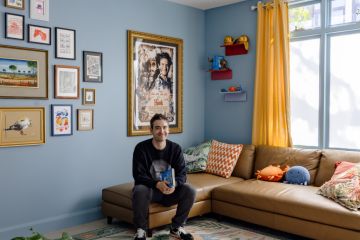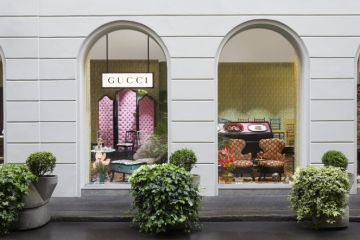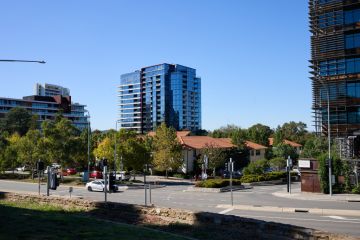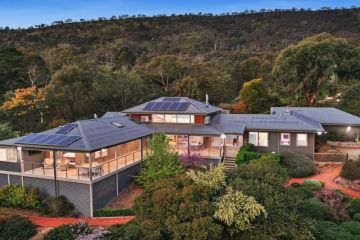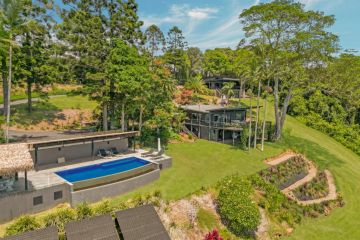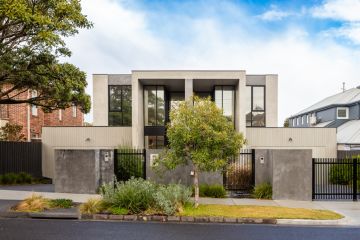Are these Australia's most energy efficient homes?
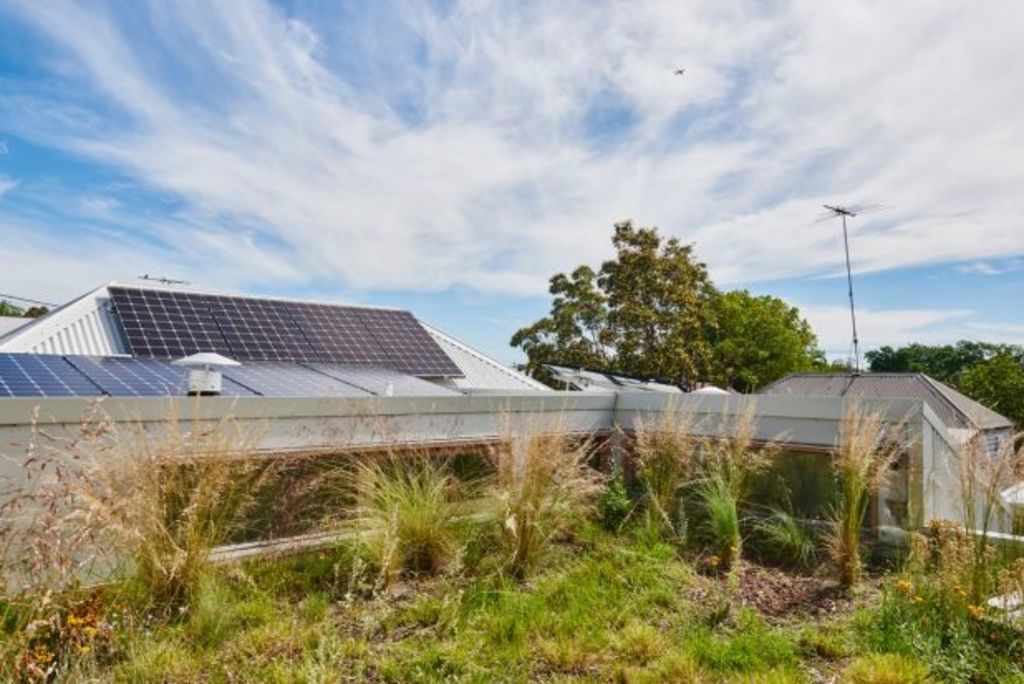
All new Australian homes are required to have a six-star energy efficiency rating, but there are designers, builders and homeowners around the country going further and leading the way when it comes to creating exceptionally sustainable homes. Take a look at several of Australia’s most energy efficient houses and find out how you can make your own home more sustainable, too.
The 10 Star Home, Cape Paterson
The 10 Star Home sits in Cape Paterson, a blustery seaside village in South Gippsland. The first residence with a 10-star energy rating in Victoria, it’s a carbon-positive, four-bedroom display home with a zero-waste philosophy, conceived of and constructed by design and build company The Sociable Weaver alongside Clare Cousins Architects.
Most remarkably for a house in a region known for its temperamental climate, the 10 Star Home has no mechanical heating or cooling – rather, it self-heats and cools via passive solar design, cross-flow ventilation, thermal mass concrete floors and heavy-duty insulation.
“Outside could go anything from two degrees up to 30 degrees, and our internal temperature hovers between 18 to 26 degrees all year round,” says The Sociable Weaver co-founder and director Dave Martin.
There’s a 4.8-kilowatt solar photovoltaic system on the roof, and a recent reading showed that the house is producing twice as much power as it’s using. Waste was minimised during construction by reducing packaging from suppliers, and the entire abode features non-toxic materials and products, from paints and furniture, down to washing detergents and linen.
Martin says the project was intended to educate the construction industry about building sustainably, as well as create an attractive, affordable home – it retails for $499,000 – that enhances human and environmental health.
“It’s amazing to see how it performs. It’s just mind-blowing.”


 The 10 Star Home, Cape Paterson . Photos: Dan Hocking
The 10 Star Home, Cape Paterson . Photos: Dan Hocking
Melbourne Vernacular, Yarraville, Melbourne
In inner-city Melbourne, land is at a premium. To increase the amount of outdoor space on their 200 square metre Yarraville block, Scott and Leanne Thompson added a green roof to their century-old worker’s cottage.
As well as giving them another garden setting, the green roof insulates their kitchen and living area, minimises storm water run off, is self-irrigating and attracts biodiversity.
“I go up there and I’m blown away to find lizards running around,” says Scott.
The Thompsons meticulously renovated their heritage home, dubbed Melbourne Vernacular, to turn it into an eight-star residence. It was stripped almost to the bones, and a range of innovations were added to cut carbon emissions and reduce energy use. There’s now a four-kilowatt solar PV system, zero VOC paints, a compost and worm farm, and much more.
Recycled materials were employed throughout, such as red bricks from a garden path used to build a striking internal wall, strategically placed to absorb heat and warm the house.
“It was about trying to showcase a house that performs exceptionally well in terms of impact on the environment, but at the same time is incredibly beautiful,” says Scott.


 Melbourne Vernacular, Yarraville, Melbourne. Photos: Nikole Ramsay
Melbourne Vernacular, Yarraville, Melbourne. Photos: Nikole Ramsay
Hemp House and Studio, Mullumbimby
Designer Jaye Irving, of Barefoot Sustainable Design, was engaged by a client to help create a family home in the Northern Rivers town of Mullumbimby, back in 2013. His clients were inspired by log cabins they’d seen in Montana, and wanted the same big windows to draw in lots of sun.
“The house is really interesting because it’s built around a family,” says Irving. “You find clients that carry your same vision. They want to reduce their energy and material uses so that they can show something to their kids.”
Irving used “a very, very large portion of hemp for the walls”. Hemp has a high attenuation level, which provides sound proofing and reduces heat or cold leaking in from outside.
“They say most of their neighbours come and visit them in the winter because everyone’s house is freezing and there is perfect temperature all year round,” he adds.
The property also runs on solar power, has a recycling system for waste, features recycled materials, and has a 24,000-litre water tank which is used as the main water source.


 Hemp House and Studio, Mullumbimby. Photos: Robyn Mill
Hemp House and Studio, Mullumbimby. Photos: Robyn Mill
8.4 Star Cottage, Beulah Park, Adelaide
Paul Hendy, founding director of Adelaide-based sustainable design studio TS4 Architects, hails from the UK and laments how cold most Australian houses are in winter.
He transformed his own home, a 1904 cottage in Beulah Park, into an 8.4-star, climate-responsive abode by adding a contemporary addition, thermal mass, and an automation system that shifts air from the warm new portion to the older, colder rooms in winter, and then the other way around in summer.
“Then to really push the performance of the building we put in a basement,” explains Hendy. “That’s one of the main features, there’s a very stable temperature in what would be the main bedroom and en suite below.”
There’s a 5.2-kilowatt solar system on the roof, and Hendy had the first thermodynamic hot water system in Australian installed.
“It’s given me free hot water,” he says, and his energy bills are almost zero as well. “It’s comfortable living without having to pay a small premium in energy bills.”
Hendy is passionate about sustainable design, and says his end game is to minimise resources used, assist the planet, and provide a positive example and healthier world for his daughter.


 8.4 Star Cottage, Beulah Park, Adelaide. Photos: Supplied.
8.4 Star Cottage, Beulah Park, Adelaide. Photos: Supplied.
So how can you build your own sustainable home?
Solahart is a solar company that’s been in the renewable energy business since 1953, when it first commercialised solar hot water in Western Australia. Since then, it’s sold more than 1 million systems in over 70 countries.
Solahart general manager Stephen Cranch says Solahart can help Australians who want more sustainable and energy-efficient homes by operating as a “one-stop shop” for solar and energy storage systems.
“Solar power, also know as photovoltaic or PV systems, converts the light from the sun into electricity to power your home and is a popular solution, especially when you have a large roof area,” he explains.
“Solar hot water uses the heat from the sun to provide hot water and is a great way to reduce energy given that conventional water heating accounts for around 25 per cent of a household’s energy use.”
 Solar power converts the light from the sun into electricity to power . Photo: Solahart Facebook
Solar power converts the light from the sun into electricity to power . Photo: Solahart Facebook
Solahart’s range also includes home battery storage, which enables residents to store excess solar electricity to power their homes when the sun isn’t shining, and will soon launch a smart solar-optimised electric water heater, Solahart PowerStore, which does the same thing for hot water and will also be compatible with home energy management systems, allowing homeowners to better manage overall energy use.
Prior to purchase, the company offers in-home appointments with customers to discuss what they’d like to achieve, and help them understand how their solar energy will operate.
“We listen to the homeowner and provide a bespoke solution for them,” Cranch says. “Our goal is to make it easy for the customer to understand the complexities of solar, so that they can make an informed decision.”
 Solar power allows homeowners to better manage overall energy use. Photo: Solahart Facebook
Solar power allows homeowners to better manage overall energy use. Photo: Solahart Facebook
States
Capital Cities
Capital Cities - Rentals
Popular Areas
Allhomes
More
